Want to be seen here?
Connect your company to the marketplace for free.
Compare different campaign proposals. Save time and money.
Time for a display campaign? Ocast has gathered thousands of solutions in one place so you can get started quickly. Fill in the form and start receiving offers for campaign proposals.

Jewish News of Greater Phoenix is an independent weekly Jewish newspaper published in Phoenix, Arizona. The newspaper reports on local, national, and international stories of interest to the Jewish co...

The Standard began in November of 1990 by Don and Matthew Wanner. The father and son team grew the 2,000 copy, black-and-white newspaper into its current four-color, multi-section, 8,200 copy countywi...
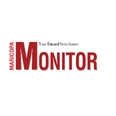
The Casa Grande Dispatch turned 100 years old in January 2012, and is Casa Grande’s oldest business in operation. The Dispatch has played a significant role in informing the public and helping citizen...

The weekly newspaper the Navajo-Hopi Observer contains tribal news, human interest stories, community events, sports, school and health related information for the Western Navajo tribe and all of the ...
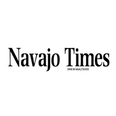
Since 1959, the Navajo Times newspaper has been covering news and events on the Navajo Nation and surrounding communities with in-depth coverage with accurate, fair reporting. The Navajo Times is the ...

Nogales International is a newspaper, based in Nogales, Arizona, United States, founded in 1925. It is published on Tuesdays and Fridays and is a division of Wick Communications. Nogales is located on...

The Payson Roundup is a leader in both print and digital media. Located in the heart of Arizona in Rim Country, The Payson Roundup newspaper publishes twice weekly on Tuesday and Friday, the Rim Revie...

The Business Journals is the premier media solutions platform for companies strategically targeting business decision makers. We deliver a total business audience of 15 million people via our 44 websi...
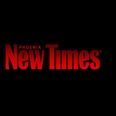
Since its founding in 1970, Phoenix New Times has become a cultural force in the Valley of the Sun.Thanks to our early commitment to digital journalism, phoenixnewtimes.com attracts more than 1 millio...

The Prescott Valley Tribune is a weekly publication of Prescott News Network that covers local news for Prescott Valley, Dewey-Humboldt and nearby quad-city Yavapai County communities. The Prescott Va...

San Pedro Valley News-Sun is a Newspaper publisher located at 102 S Fab Ave, Sierra Vista, Arizona 85635, US. Established in 1899, the News-Sun has served the Benson and St. David communities for 115...

Independent Newsmedia is a unique publishing and printing company that supports every American’s First Amendment rights and encourages and assists citizens in exercising those rights responsibly.We p...
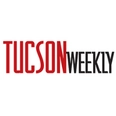
The Tucson Weekly is an alternative newsweekly that was founded in 1984 by Douglas Biggers and Mark Goehring, and serves the Tucson, Arizona, metropolitan area of about 1,000,000 residents. The paper ...

The flagship publication, the award-winning Verde Independent, serves the Verde Valley region of north-central Arizona since the publication started in 1948. The two-times weekly product is the primar...
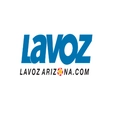
La Voz Arizona is a newspaper produced in Phoenix, Arizona, in the United States. La Voz Arizona is a sister publication of The Arizona Republic, and it is owned by Gannett.La Voz Arizona publishes lo...

Nogales International is a newspaper, based in Nogales, Arizona, United States, founded in 1925. It is published on Tuesdays and Fridays and is a division of Wick Communications. Nogales is located on...

West Valley View covers and delivers to Avondale, Buckeye, Goodyear, Litchfield Park and Tolleson Arizona as well as unincorporated Maricopa County south of Northern Ave. and west of 83rd Ave.The View...

The White Mountain Independent covers news and events throughout Arizona's White Mountains serving both Apache and Navajo Counties.The White Mountain Independent offers a high penetration, growing rea...

WGCN is actually two newspapers in one. The Williams section covers news about Northern Arizona along with local Williams news, sports and events. This section also includes news from Parks and Ash Fo...
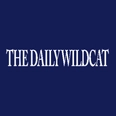
The Daily Wildcat publishes about three times a semester in print (find recent back issues here) during fall and spring. Fall/spring circulation is 7,000 copies. DailyWildcat.com is the publication's ...
Display advertising, often referred to as banner advertising, involves visual ads placed on various websites, in contrast to text-based search ads that appear in search results on platforms like Google.
While search ads are focused on direct response, display ads aim at building brand awareness through engaging visual content like images or animations. Display advertising also enables retargeting, where ads are redirected to users who have previously visited your website, helping to keep the brand fresh in mind.
With opportunities to measure campaign performance and customize design and target audience, display advertising offers an attractive strategy for brands looking to enhance their online presence and effectively engage their target audiences.
The most effective formats and sizes for display ads vary depending on the platform and target audience, but here are some popular options:
Leaderboard (728x90 px): Positioned at the top of the page, this ad size captures visitors' attention right away.
Medium Rectangle (300x250 px): This size is flexible and can be placed in sidebars or embedded within content.
Large Rectangle (336x280 px): A larger variant of the Medium Rectangle that offers more visible space.
Wide Skyscraper (160x600 px): Often used in sidebars, offering a long, vertical ad space.
Mobile Leaderboard (320x50 px): Optimized for mobile devices and often placed at the top or bottom of the screen.
Consider adhering to industry standards and adapting ad format and size to the specific platform and your target audience. However, the emphasis should be on having well-thought-out content that engages and is relevant to your target audience with clear "Call to Actions" (CTA) to encourage clicks and conversions.
Measuring the effectiveness of your display advertising campaigns is crucial for evaluating the results of your campaign and for fine-tuning future marketing strategies. A first step could be to look over the Click-Through Rate (CTR), which represents the number of clicks your ad receives per view, providing an indication of the ad's engagement level. It is also important to track the conversion rate, which shows how many clicks are converted into desired actions such as sales or leads. Cost Per Conversion is another key indicator that helps you understand the cost-effectiveness of your campaign.
It may also be good to look at the impression rate, that is, how many times the ad has actually reached out and been displayed for brand-building purposes.
One of the major advantages of this type of advertising is its ability for audience targeting, where ads can be directed based on demographics, behavior, and retargeting, enabling a more personalized advertising experience. Moreover, with the use of various analytical tools, it becomes easy to track and measure the campaign's effectiveness by observing data on clicks, conversions, and views, which provides valuable insights.
However, display advertising also has its downsides. Ad blocking is one of the major challenges, where users can choose to block display ads, which in turn reduces the reach and effectiveness of your campaign. Ad fatigue is another downside, where ads that are shown too often can become irritating for the users, leading to decreased engagement and negative brand associations. Despite the ability for audience targeting, audience dilution can be a challenge if precise targeting is not used, which potentially leads to wasted marketing expenses. Additionally, the cost of display advertising can become significant, especially if the campaign is not well optimized to achieve desired results.
The cost of display advertising can vary based on several factors such as website, ad format, and target audience. Besides that, there are different pricing structures one can base on to adjust the cost according to the goal at hand. Below we list different pricing options for display advertising.
CPM (Cost Per Mille or Cost Per Thousand Impressions):
The price for 1000 views of your ad.
Often used for campaigns aimed at increasing brand awareness.
CPC (Cost Per Click):
The price you pay for each click your ad receives.
Used when the goal is to drive traffic to a website or increase interaction.
CPA (Cost Per Acquisition or Cost Per Action):
The price for each specific action or execution, such as a purchase or lead generation, that arises via your ad.
Used when the goal is conversions rather than just views or clicks.
CPL (Cost Per Lead):
The price for each lead generated through your ad.
Used in B2B marketing or for products/services with longer sales cycles.
CPV (Cost Per View):
The price for each viewing of a video ad.
Often used for video-based advertising campaigns.
Each pricing structure suits different goals and campaign types, and choosing the right pricing structure can help maximize the ROI for your display campaign.
Connect your company to the marketplace for free.
No commitments.